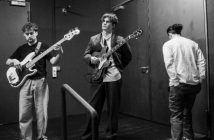The ability of music to capture a moment, mood, or place is immense, and in many ways, music is a universally understood language that has the powers to transcend cultural boundaries and connect people from across the globe. Yet whilst it may bring people from all corners of the planet together, there are very noticeable variations to how live performances are received and interacted with by its attendees around the world. These differences are vast and can be dependent on the music genre or act, however by focusing on rock concerts and their reception generally in Europe and North America, South America, and Japan a clear sense of these distinctions can be made.
Europe and North America are a staple tour circuit for artists of any level. Being spoilt for choice in terms of live acts playing in these countries, the crowds will have seen a lot and thus there is an expectation for artists to deliver. This can create both moments of magic with a band firing on all cylinders that ignites a crowd, such as the Red Hot Chili Peppers at Slane Castle, or lacklustre sets that leave a dull jaded audience who were expecting a lot more. Additionally, the prevalence of mobile phones and ticket scalping further add to the hit and miss reception of crowds that starkly contrasts that of other regions.
Amongst rock n’ roll folklore, South American crowds are notorious for their palpable energy and dedication to the act they are seeing. One only has to watch AC/DC’s pro-shot footage of them performing the blistering hit ‘Thundersrtuck’ to legions of Argentine fans for their dedication to become painstakingly clear. The crowd writhes and sways as Brian Johnson is almost drowned out by the 70,000 strong crowd, and as the song breaks down the entire standing area erupts in frenzy to the point in which some of the camera angles are shaking. It is really no wonder that a large number of live DVDs are filmed from South American tours, and these fans are proof that the act is only half of the equation when it comes to concerts. This may be down to the fact that many South American countries are not extensively toured by big acts and thus the one or two shows a country may have gets packed out by the die-hard fans of that area. The passion and energy of these fans is truly unique, and any artist should feel fortunate when they begin to receive their ‘come to brazil’ messages.
Arriving in Japan, the audience reception is a polar opposite to that of South America. Japan is a country that marches to the beat of its own drum, and its reception of live concerts is no exception. With most large concert venues, such as the Tokyo Dome, opting for seated shows coupled with camera and phone bans, the atmosphere can be a lot more relaxed compared to its western counterparts due to the lack of mosh pits or the constant jostling for a prime position. Fans mostly cheer, jump, and fist pump with everyone staying in front of their seat. This is clearly shown by Guns ‘n Roses’ 1992 Tokyo performance where the crowd was clearly in the hands of the band yet remained somewhat reserved. This audience characteristic could be related to the concept of Teinei, which loosely translates to ‘politeness’, that overarches both Japanese culture and life. That being said, audiences in Japan are incredibly passionate, they just express themselves in a different way. One can expect undivided attention and following the cheering at the close of a track, silence.



